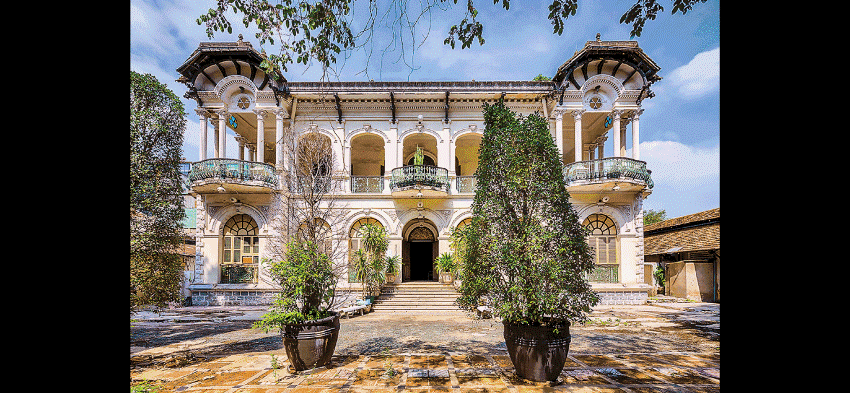
However, the current regulations are proving inadequate in preserving these relics, and no regulations or policies exist for communities to participate in the conservation of these relics.
In fact, the preservation of cultural heritage sites in Ho Chi Minh City is increasingly becoming the concern of the general community and philanthropic social groups. As was in the case of transportation planning, the City authorities hardly took into account monument protection areas or the architectural landscape of works close to, or in the peripheral areas of these heritage monuments.
But recently, in the process of implementing construction planning or licensing urban construction, the Department of Planning and Architecture, the Department of Construction, and the District People's Committees have all been consulting the Department of Culture and Sports so as to consider any adverse effect on these historical monuments. This decision has contributed greatly to preserving these monuments and the landscape around, and preventing further encroachment of surrounding areas of these heritage sites.
However, for relics that have been ranked, the City is facing many difficulties in maintaining and caring for them, and as a result many relics are becoming seriously degraded and vandalized. In the process of urban development in particular, many relics have even been lost or irretrievably damaged. Many relics that have been ranked have been overlooked completely as they are not covered under any preventive regulations so far. For example, Ba Son is a very important historical site, but it is still not covered for preservation, as is the case of many old villas that are listed only on paper, but in reality they have been termed and divided into town houses.
Currently, the restoration and preservation work of heritage monuments and relics in Ho Chi Minh City relies solely on government budget and social support, because monuments that can create self-revenue are extremely few in number. For this reason, since 2009 until now, the People's Committee of Ho Chi Minh City has approved VND 500 billion for the conservation and restoration of 32 monuments; approved total investment of VND 120 billion for more such projects; and confirmed capital investment of VND 200 billion for restoration works of historical sites. Since 2009 until now, with increase in public awareness, public funding also rose to VND 400 billion.
Thus, public support for the funding of preservation and restoration of heritage sites and monuments in Ho Chi Minh City is gaining positive momentum. However, in order to attract and mobilize more social awareness for this task, it is necessary to publicize the list of heritage sites on mass media for more community participation in conservation projects, as well as early promulgation of regulations for preserving heritage sites and ancient relics. In reality, in order to encourage the community to participate and contribute to the preservation and conservation of the heritage monuments in the City, the Department of Culture and Sports has recently been coordinating with the People’s Committee of districts to make plans to preserve heritage areas. If some people own land in the planned areas, they will receive adequate support. This is a positive step in helping to preserve heritage sites and ancient relics in the City.
In addition, the 2001 Law on Cultural Heritage, and the Law Amending and Supplementing this 2009 Law on Cultural Heritage, as well as all the decrees and circulars for implementing the law are mostly inadequate, overlapping and incompatible with the realistic situation on ground. Accordingly, in coming time, the City will need to promote conservation in tandem with development projects, and also develop mechanisms and policies to create conditions for people to participate in conservation of heritage and historical monuments. Specifically, the City needs a more appropriate policy to encourage those sources who are willing to step forward to preserve these historical relics, however modest their contribution may be.
According to Dr. Nguyen Hanh Nguyen, from the Save Heritage Vietnam Group (SHV), investing in heritage protection amounts to sustainable investment for all times to come. In real estate, investors have many options and self-interests, but choosing to invest in protecting the country’s heritage is always a wiser and a more economically sustainable investment for the future. Investors can have a short-term or a long-term view in how they deal with the heritage of the country. Preserving culture and heritage ensures a stable and long term sustainable development of the culture of the country, and a lasting national legacy that will inspire all future generations to come.




















